Abrasive cleaning
Abrasive cleaning is the most effective way to prepare surfaces before painting, galvanizing, welding, or subsequent machining. It allows for the quick and high-quality removal of rust, scale after heat treatment, cutting marks, residues from molding compounds, or old coatings.
At KARBAZ LLC, we use various methods of abrasive processing, which allows us to work with a wide range of parts — from large steel blanks to small, precise components made of aluminum or stainless steel. This helps to reduce the time spent on preparatory operations, achieve consistent quality in batches of any size, and avoid manual cleaning. Our technologies not only clean but also shape the surface — from rough scale removal to uniform matting or micro-polishing.
The combination of modern equipment and our experience guarantees that every part, after cleaning, has a uniform surface suitable for further technological processes without additional finishing. Abrasive processing at KARBAZ LLC is a combination of modern technology and practical experience that delivers the best results for any part.
Shot Blasting Machines
Konrad Rump 13-E/V1
The largest shot blasting machine in Western Ukraine — the Konrad Rump 13-E/V1 — is equipment that opens up a whole new level of possibilities for our customers. It was created to work with massive assemblies and complex parts where other methods are too slow or do not provide the required quality.
The unit is equipped with a 1-ton hoist, but this does not limit the weight of the workpieces: if a part is heavier, it can be moved inside without suspension. The working chamber allows loading workpieces up to 3 m in height and up to 2.2 m in width and depth. This means we can accommodate both large-sized products and smaller parts — the efficiency and quality of the processing remain unchanged.
For the customer, this means flexibility: this unit equally well cleans castings, forged and welded structures, parts after gas, plasma, or laser cutting, blanks after heat treatment, and components made of aluminum, stainless steel, or non-ferrous alloys.
Powerful turbines allow for the rapid removal of thick layers of scale, slag, and oxides, while the adjustable intensity makes it possible to work in both a harsh mode and a delicate one — with materials where precision and surface preservation are important.
The uniqueness of this machine is also in its ability to perform not only cleaning but also strengthening treatment (shot peening), increasing the fatigue strength of the parts.
Thus, the customer receives not only a clean surface ready for painting or galvanizing, but also an additional benefit — improved operational characteristics of the product.
Konrad Rump 13-E/V1
- quickly cleaning large batches of parts, where manual cleaning would take too much time;
- working with heavy items that can be moved into the chamber without being suspended on the hoist;
- ensuring equally high-quality processing of both large assemblies and the smallest parts;
- performing surface shaping for optimal results in painting, galvanizing, welding, or machining;
- performing strengthening treatment (shot peening), which increases fatigue strength and extends the service life of products.
Konrad Rump 13-E/V1
The unit allows for:
quickly cleaning large batches of parts, where manual cleaning would take too much time;
working with heavy items that can be moved into the chamber without being suspended on the hoist;
ensuring equally high-quality processing of both large assemblies and the smallest parts;
performing surface shaping for optimal results in painting, galvanizing, welding, or machining;
performing strengthening treatment (shot peening), which increases fatigue strength and extends the service life of products.
The process is completely enclosed: the abrasive circulates in a closed loop, and dust is removed by an aspiration system. This makes the cleaning safe, environmentally friendly, and controlled, and the customer receives products with a uniform surface, ready for further use without additional operations.
For shot blasting, we use both carbon steel and stainless steel shot. The type of abrasive is chosen depending on the material of the parts: steel shot is used for carbon steels, and stainless steel shot is used for stainless and non-ferrous alloys to avoid foreign inclusions and subsequent corrosion.
We work with different shot fractions — from 0.1 to 1 mm. Larger fractions are used for the quick removal of thick layers of scale or slag after heat treatment or cutting. Smaller fractions provide uniform matting, more delicate cleaning, and controlled surface roughness.
This approach allows us to achieve a surface with specified Ra/Rz parameters and prepare the parts for the exact technological process required: painting, galvanizing, or subsequent machining.
RÖSLER RMBC
The RÖSLER RMBC belt shot blasting unit is an ideal solution for serial batches where the customer values speed, repeatability, and cost-effectiveness. The working chamber, measuring 400 × 560 mm, is equipped with a special conveyor belt that constantly mixes the workpieces. This ensures that the surface of each part is processed uniformly, without “blind spots” or quality variations.
The cycle lasts only 5–15 minutes, and after it, the batch of parts is ready for further use — painting, welding, or machining. This means that even large orders are completed in a short time without compromising quality.
The RÖSLER RMBC is easily integrated into serial production: automatic loading and unloading reduce time spent on preparatory operations, and the closed-loop system for abrasive recirculation and dust aspiration makes the process clean and economical.
You get a stable result in every cycle and significant savings compared to manual cleaning.
Glass bead blasting
Glass bead blasting is a delicate technology that is performed using microscopic glass beads in a stream of compressed air. This method allows the removal of scale after heat treatment, thin oxide films, old coatings, or cutting marks without damaging the base material or changing the geometry of the part.
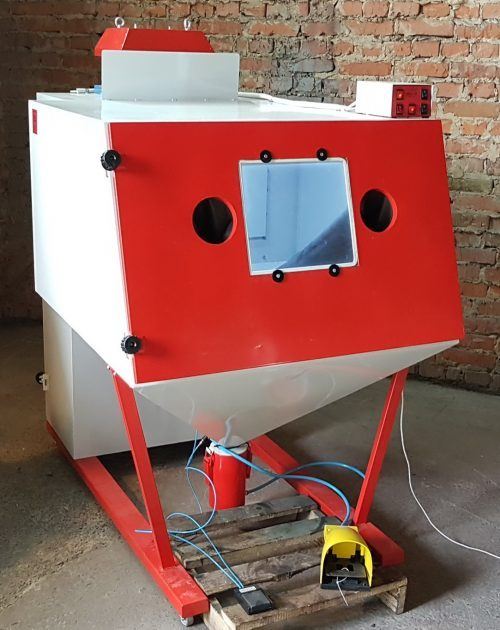
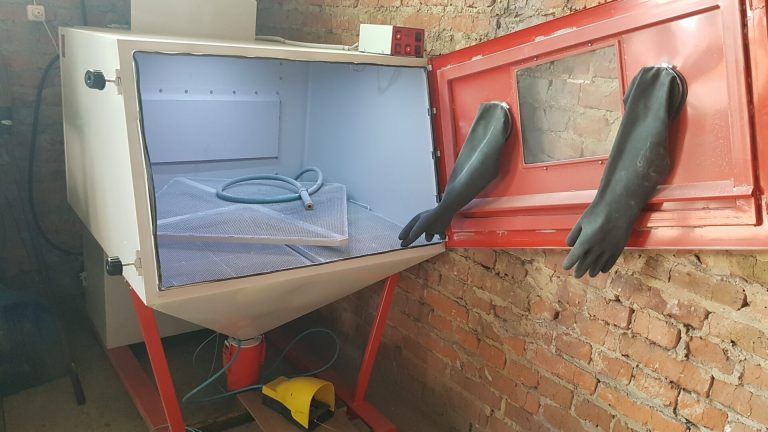
The glass microbeads are completely inert, so the surface after processing is not contaminated with foreign inclusions and is not prone to accelerated rust formation. In addition to cleaning, the process creates a slight work hardening that increases the metal’s resistance to corrosion and microcracks. If necessary, we can adjust the air pressure, changing the surface roughness — from gentle matting to a deeper preparation for coating. In addition to cleaning, this method creates a soft polishing effect — parts acquire a uniform matte surface that combines a neat appearance with protective properties.
Compared to sandblasting, glass bead blasting works much more gently: this method is safe even for parts with thin walls, threads, or precise geometry. This makes it an ideal solution where not only cleanliness but also the preservation of shape and appearance is important.
We work on a chamber-type unit with working dimensions of 1000×1000×600 mm, which allows us to process both small, precise components and larger products.
Glass bead blasting is used in many cases: for cleaning parts after heat treatment, preparing tools, engine casings, turbine blades, aluminum wheels, casting molds, components made of bronze and brass, as well as for restoration work.
Vibratory tumbling
Vibratory tumbling of metal parts is a modern method of finishing that allows for the simultaneous cleaning, polishing, and deburring of a large number of items. In this process, the parts are placed in a medium with abrasive media and special solutions, where they are uniformly processed by vibration.
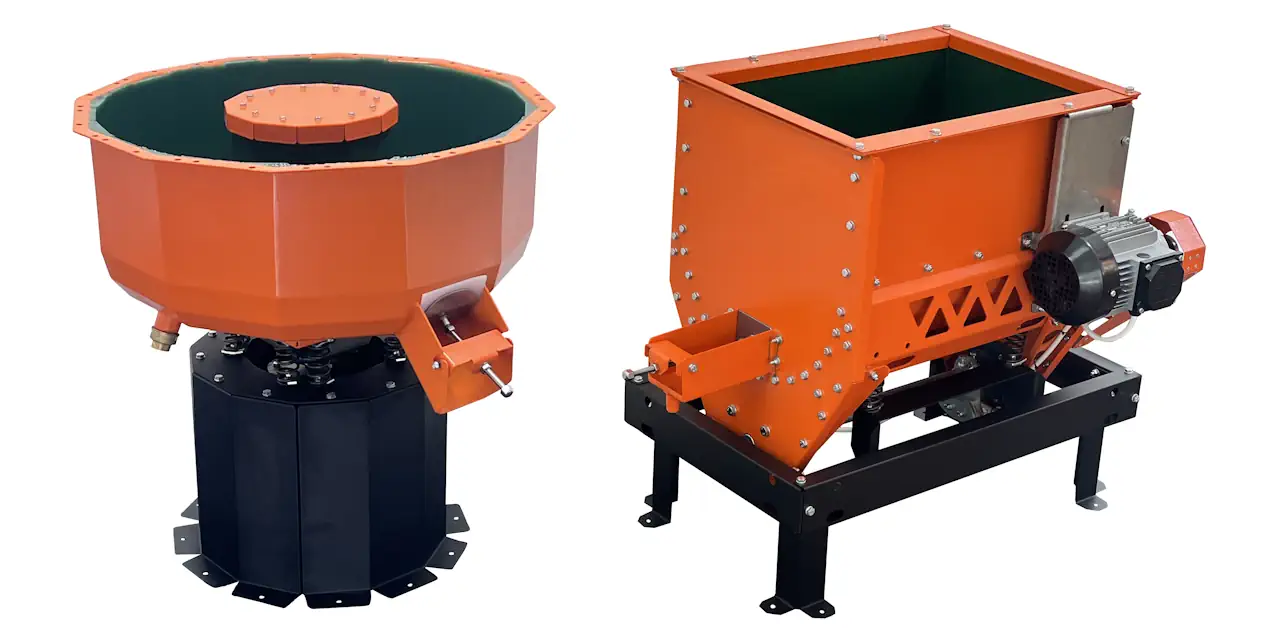
Sandblasting
Sandblasting is a classic technology that has been used for decades to prepare surfaces. A powerful stream of abrasive under pressure effectively removes rust, scale after heat treatment, old paint, slag, and other contaminants.
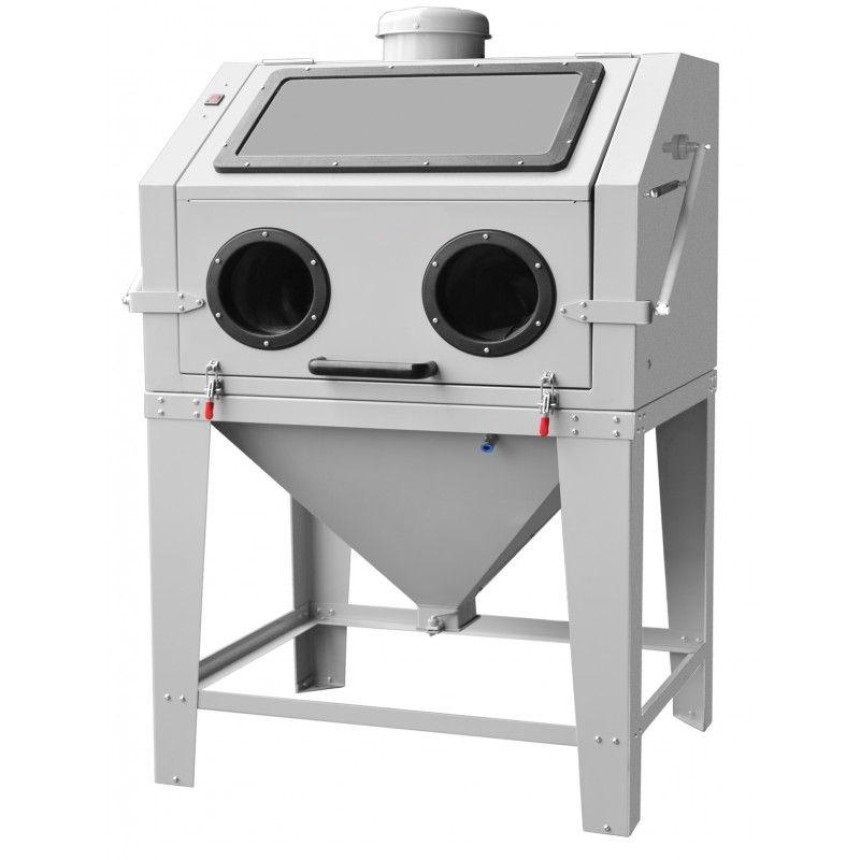
The method is universal and suitable for processing a wide range of products: from cast and forged parts to welded structures and metal constructions. Thanks to its simplicity and reliability, sandblasting remains one of the most popular cleaning methods, ensuring a clean and uniform surface.
At KARBAZ LLC, we perform sandblasting on both individual parts and small batches of products. This allows us to prepare the surface for further processes — painting, galvanizing, or welding — with predictable quality.
Abrasive micro-polishing
In the process of carbo-oxidation (an analogue of Tenifer-QPQ), shot blasting plays an important intermediate role. At this stage, we perform micro-polishing with fine fractions of shot (0.1–0.3 mm of stainless steel). This approach guarantees a clean process, prevents the ingress of foreign carbon inclusions, and minimizes the risk of corrosive manifestations in the finished coating.
The purpose of this operation is to create a uniform, stable base for the final oxidation. We remove roughness peaks, level the micro-relief, and form a surface that ensures a homogeneous color of the coating, high adhesion, and durability in operation.
In cases where parts have particularly thin walls or a complex configuration, we can use glass bead micro-matting as an alternative preparation method. This allows us to adhere to specified roughness parameters and achieve the same surface uniformity provided by shot blasting.
As a result, the customer receives a surface that is perfectly prepared for final oxidation: uniform, geometrically stable, and with an impeccable appearance.
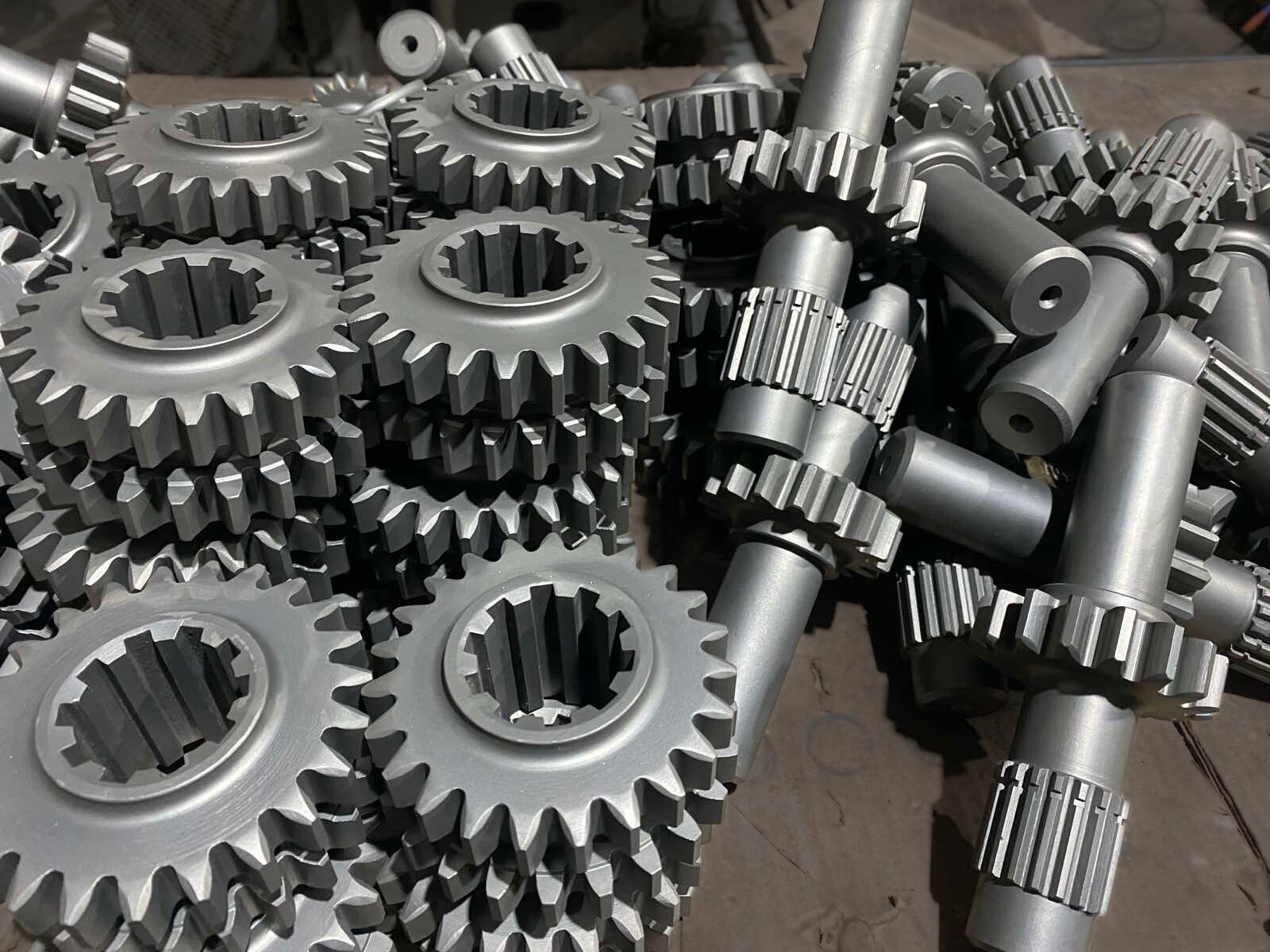
Why choose us
Abrasive cleaning at KARBAZ LLC is not a separate operation, but a comprehensive service that allows the customer to save time, reduce costs, and get a consistently high-quality result. We offer solutions for any task: from massive steel blanks after heat treatment to serial batches of small parts made of aluminum or stainless steel.
Our clients value:
Quality — the surface is uniformly clean, ready for painting, galvanizing, or machining.
Speed — large volumes are completed in a short time without compromising results.
Flexibility — we select the cleaning method for a specific material and type of part.
Cost-effectiveness — automated processes reduce the cost of manual preparation and abrasives.
Consistency — each batch of parts has the same result regardless of complexity.
Thanks to modern German equipment and various processing technologies, we can guarantee our customers what is most important to them: parts are returned quickly, with predictable quality, ready for further use in production or assembly.
